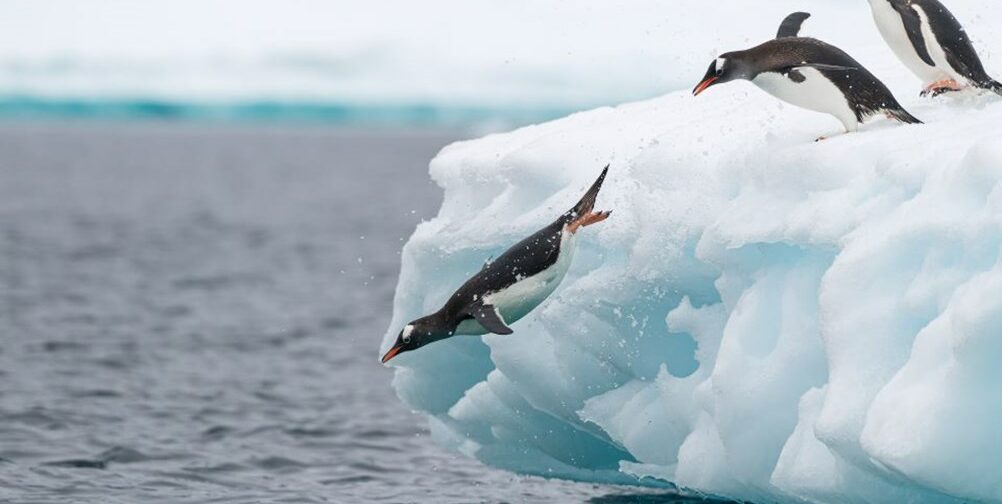Far from the horrors unfolding around the world, it is inspiring to learn that the ship Endurance from Ernest Shackleton’s semi-ill-fated Antarctic expedition was just found. Especially once you realize it was 10,000 feet down (or 3,000 metres if you must) in the frigid ocean off Antarctica and it’s hard enough to find something you drop in three inches of snow in your driveway. As one newspaper put it, “Previous attempts to locate the 144-foot-long wooden wreck, whose location was logged by its captain Frank Worsley, had failed due to the hostile conditions of the ice-covered Weddell Sea under which it lies.” That we now have images of it sitting upright on the bottom, name clearly visible, “in a brilliant state of preservation” is a tribute to modern technology as well as the determination of the searchers. But as a viewer observes, there’s a climate angle: If it’s so much warmer today and all the ice is melting, how come they could sail a wooden ship so close to Antarctica that it took over a century to find it again amid all the, ahem, ice?
The news story in question actually does explain that the expedition led by British polar explorer John Shears aboard the South African ice-breaker Agulhas II found the Endurance four miles (six km) from the position recorded by Worsley while on a climate-related expedition. Certainly if you’re looking to get a grant, mentioning climate change is a very good idea. Even if the subject is, say, urban sprawl.
We hate to nitpick, especially since it is especially inspiring that the Shackleton expedition was only semi-ill-fated because despite the ship sinking, all 28 members eventually made it home alive, partly because a few rowed 800 miles for help. Today it’s hard enough to walk to the corner store in this snow. But seriously, what’s with the “ice-covered Weddell Sea” being ice-covered since all the ice is going, going, gone or so we’re constantly told? Think they’ll put that in the study?
We did a bit of research on the Weddell Sea and its ice extent and found that, for instance, Wikipedia is strangely coy. It does concede that “In his 1950 book The White Continent, historian Thomas R. Henry writes: ‘The Weddell Sea is, according to the testimony of all who have sailed through its berg-filled waters, the most treacherous and dismal region on earth.’” But their section on its “Climate” doesn’t mention climate change. And the British Antarctic Survey entry on it predictably genuflects that “Understanding how past ice sheets have responded to climate change helps us to predict how ice sheets might respond in a future warming world.” Might. Future warming. Are you trying not to tell us something?
Then we found a naughty 2019 paper about how Antarctic sea ice had been increasing mysteriously from the beginning of the satellite era until 2014, including in the Weddell Sea, when it finally got with the program and shrank: “the unexpected, decades-long overall increases in Antarctic sea ice extent are still being puzzled out, the sea ice extent has taken a dramatic turn from relatively gradual increases to rapid decreases.” A more recent paper, apparently written incomprehensibly on general principles of scientific obscurity rather than to conceal anything awkward, found that the situation was obscure although it was pretty clear that there is more ice in winter than summer for some reason and “continuous monitoring is required” even if it means we have to accept more grants.



If it is really sea ice, then it is already accounted for as a effect on rising sea levels. Remember the ice cubes in your G&T do not raise the level of fluid when they melt. Why doesn't anyone point this out?
Well, actually, melting ice does add a tiny bit to the water level. Water shrinks - its density increases - slightly as its temperature falls toward freezing; then around +4C water commences to expand slightly until it becomes ice. Were it not for that fact, ice would sink to the bottom of oceans, lakes and ponds - which it doesn't. As a certain large ship discovered about a century ago, about 10% of floating ice remains above the surface; when that ice cube or berg melts, the ice that was above water level becomes part of the water, contributing the liquid volume and level. But not enough to threaten floods.